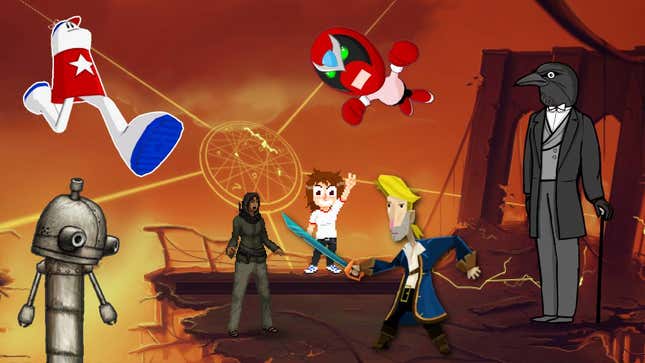
One of the most tedious repeated refrains since the turn of the millennium is the notion that “adventure games are dead.” While it’s very true that the genre’s heyday was in the 1990s, when new LucasArts point-and-click games could top sales charts, the format has never gone away. In fact, in the last 25 years it’s seen some of the very finest examples it’s ever received, and we’re here to celebrate them today.
For clarity, a point-and-click (PnC) adventure is a somewhat malleable genre in which players click on the screen to move a character, look at and interact with objects, add items to an inventory, talk to other characters, and solve puzzles, usually through conversation or combining inventory items. The most famous example ever is The Secret of Monkey Island, originally released in 1990, going on to spawn four sequels and a spin-off series of episodic adventures. But today we’re only interested in looking at the games that came out over a decade later, after the point when the naysayers so inaccurately claim the format died out.
This is not a comprehensive list of every good PnC adventure game made in the last 25 years—that’d be far too long. We’re also not including remasters or graphical overhauls, because that’d be cheating. It’s also not ranked in any order, because that’s silly. If an adventure game you love isn’t here, it’s not necessarily because we think it’s bad or hate you in particular—that only might be the case.
It’s also worth noting that yes, there’s very little between 2000 and 2010—the peak “adventure games are dead” period—because the rise of 3D meant it was incredibly difficult to get a game financed if it was 2D. There were plenty of 3D adventure games, but most sucked very badly, and those that didn’t weren’t technically point-and-click. Those that were tended to be European games that had inexplicable support from those desperate for the genre to still be fine, a phenomenon I frequently described at the time as like heroin addicts reviewing heroin. So no, The Black Mirror, Still Life and Dracula: Origin will certainly not be appearing, no matter how many people won’t let go, and even Syberia was only “fine.”
For the the avoidance of doubt, Disco Elysium is an RPG, Life Is Strange is a third-person adventure, Broken Sword 3 was a tank-controls third-person game, and Broken Age was truly terrible and isn’t appearing for that specific reason.
Now, let’s get to the good stuff.